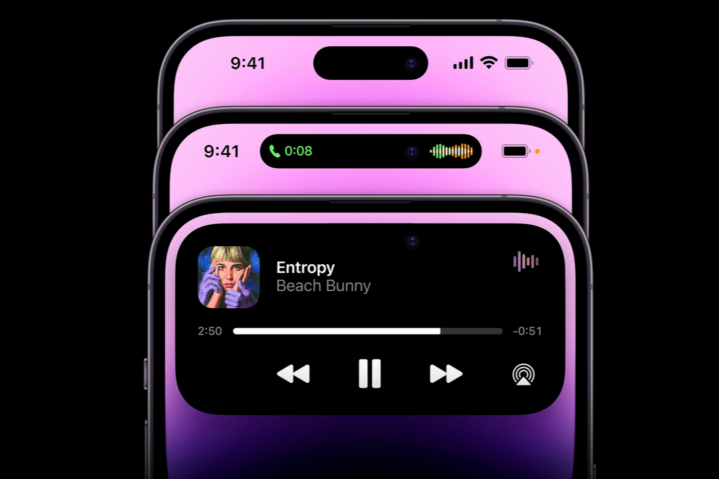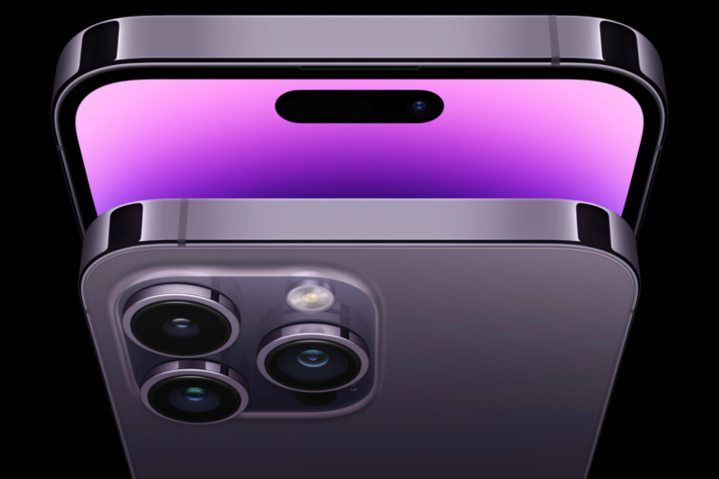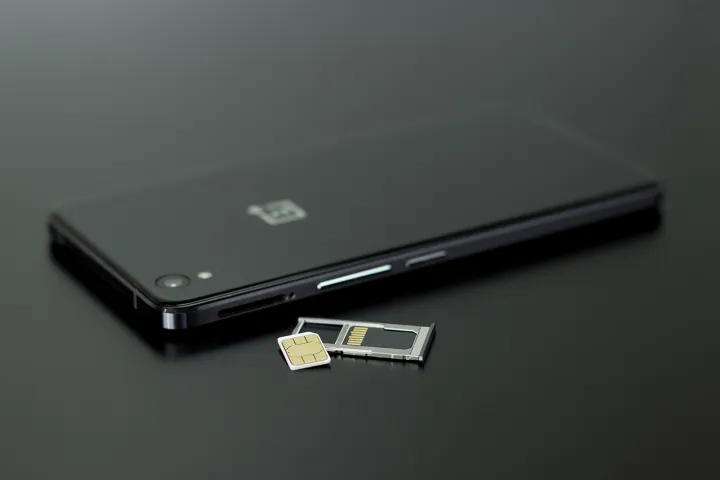Apple’s iPhone 14 and 14 Pro are going to start shipping this week after a brief pre-order period. These are the company’s marquee products for the year, and they have the weight of expectations on them. Apple has made more than a few changes to the iPhone (well, the iPhone Pro) this year. There’s a new display with a new interface paradigm, a new high-resolution camera, and the notch is gone too! Is all that enough to justify shelling over $1,000 on a new phone? Well, we’ll have to review it for ourselves and see.
Pending our reviews of the iPhone 14 and 14 Pro, here are some key takeaways from our colleagues on other tech sites.
Dynamic Island and the always-on display delight

The iPhone 14 Pro and 14 Pro Max are the first full-screen iPhones to come without the notch. Rather, Apple has equipped them with what it calls the “Dynamic Island,” a sort of side-i-shaped cut-out on the top of the screen that turns into a play space for little bits of iOS interactions. This includes the Face ID pop-up, music controls, Apple Pay confirmation, live activities, and so on.
“I need to spend more than a week with the iPhone 14 Pro to know how much of an impact it would make on my life, but for now, the biggest effect is aesthetic. Seeing the pill change into a square when signing into an app or Apple Pay with Face ID, as well as the turn right arrow appear when I’m navigating somewhere, is a nice touch,” said Engadget’s Cherlynn Low.
Of course, a lot of what Dynamic Island offers is potential. You can’t know how many apps will plug into the little live activities API and make that bit of space useful. It won’t be until the release of iOS 16.1 that apps can even begin to take advantage of it. It’ll take some time, and then we’ll be able to make a fuller assessment.
“But right now, the Dynamic Island feels like one of those things that need a year of refinement and developer attention before we really know how important it is,” Nilay Patel wrote over on The Verge.
The other bit of the display that’s getting all the attention is the always-on display. Finally joining the ranks of Samsung, OnePlus, and other Android phone makers, the iPhone’s display will now keep itself active while not in use.
“While it’s true that I first fell for the idea of the AOD, as it’s abbreviated, on Motorola’s 2013 release, the Moto X, the iPhone 14 Pro and its customizable Lock Screen make me wish Samsung and Google were doing a little more with their respective versions of the tech,” Android aficionado Florence Ion enthused over on Gizmodo.
Unlike Android phones, which show a minimal clock and some notification icons, Apple’s always-on-display implementation leaves you with a fully visible lock screen — just dimmed down. It truly is “always on.” Not everyone was a fan of this implementation. “As someone who doesn’t use a personalized background, I don’t find that a major plus,” Low said.
The camera isn’t much better though

With the iPhone 14 Pro and iPhone Pro Max, Apple is joining the high-resolution camera parade that you’ll find on the very best Android phones. From a 12-megapixel main camera, the company is making the leap to 48MP. That’s competitive with most Android phone makers who run the gamut from 50MP to as much as 200MP. As with their Android counterparts, though, the leap in the quality of results has not been as impressive as it would seem on paper.
“The reality is a bit different. Photo details are sharper, with less image noise in almost all kinds of lighting, for sure, but they’re very similar to photos taken with an iPhone 13 Pro. Can you even see any differences in image quality in this outdoor comparison? Unless you zoom in and do a thorough side-by-side comparison, not really,” said Ray Wongy, writing for Input Mag said.
“In general, the 14 Pro and 13 Pro take really similar photos. The 14 Pro is a little cooler and captures a tiny bit more detail at 100 percent in dim lighting, but you really have to go looking for it,” The Verge’s Nilay Patel said.
The iPhone still has a pretty good camera, all things considered. Perhaps, as with Dynamic Island, this is one of those things where third-party developers and talented photographers would have to pull out the true potential of the iPhone’s camera, especially with the RAW support Apple builds into its iPhones.
“In the 12-megapixel photo, the full-size crop can only zoom so much. But look at the 48-megapixel RAW file below — you can zoom in so much closer. And the detail! It’s really impressive for a smartphone camera. Oftentimes, high-megapixel photos from Android phones mean crunchy details. Whatever wizardry Apple is doing with the Photonic Engine is practically magic,” Wong writes.
It’s still a good outcome, but you get the sense reviewers expected better out of the box.
Save your money, buy an iPhone 13

If you were looking carefully, you’d notice we skipped over the iPhone 14 and focused more on the Pro models. That’s because when it comes to the iPhone 14, there’s one conclusion that’s hard to escape: Buy an iPhone 13 instead. Apple’s refining the iPhone 13 with the same processor but bigger cameras, a slightly bigger battery, and a few other minor changes here and there. It’s to the credit of the iPhone 13 that there’s so little to improve to keep it competitive, and your wallet would thank you if you were to carefully consider buying it over the 14.
“Most people should consider other options, but there is an argument for the iPhone 14 if you meet a narrow set of criteria: You’re on an iPhone 12 or older, you really want the satellite SOS feature, you prefer a 6.1-inch screen size (it is, after all, the right one), you want the best camera quality at this price point, you just need a new phone right now, and your carrier is offering a sweet trade-in deal,” The Verge’s Nilay Patel advises.
There’s little reason to get an iPhone 14 specifically since you can get a lot of what the iPhone 14 offers with the iPhone 13, and for less. This doesn’t apply to the iPhone 14 Plus, which is a different beast on its own. For the regular iPhone 14, though, it’s not the best deal.
The sundries

The iPhone 14, 14 Pro, and 14 Pro Max all have good batteries. The same held true for the iPhone 13, and it’s heartening to see Apple meeting the standards they set. The switch to eSIM did leave some reviewers mildly irritated, but it’s nothing that can’t be fixed over the next couple of years as carriers work out their kinks.
The crash detection feature looked promising, but few reviewers were willing to test it out. Ditto for the satellite communications support. Both are great and useful feature additions, but they’re also niche in that you’ll hope never to use one, and you’ll rarely be in a situation where the stars align for you to use the other (literally).
It’s the iPhone X, 8, and 8 Plus all over again

This year sees Apple redo the iPhone X again. It’s a new form-factor for iPhone, while the old one stays behind. There’s even a Plus model as well. If you want to leap into the future and see what the next years of iPhone hold, the iPhone 14 Pro and 14 Pro Max are for you. If you’d like to cling to the comfort of the now for a while longer — the iPhone 14 (and soon-to-be 14 Plus) are what Apple’s selling.
Editors’ Recommendations




